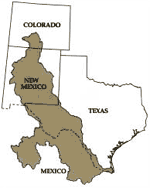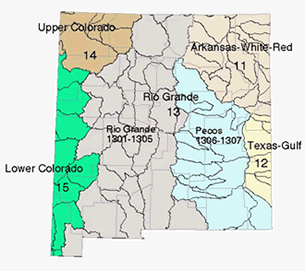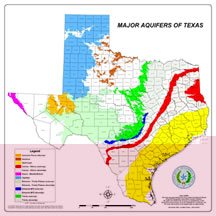How Does A Watershed Function?
Healthy watersheds provide three major functions. First, they transport and store
water, sediment, pollutants, and organisms. In general, a stream's load consists of
three kinds of materials: dissolved materials carried in solution, fine particles held
in suspension, and heavier or coarser materials pushed or bounced along the channel bottom.
Second, watersheds cycle and transform energy, as well as carbon, nitrogen, and phosphorus.
And finally, they provide ecological succession through changes in vegetation due to movement
of a watershed's energy, water, and materials from abiotic environment to biotic. The drainage
net of a watershed provides habitats for aquatic organisms, is an important component of
terrestrial ecosystems, and conveys runoff and sediment loads out of each stream's watershed.
Over time, a stream becomes graded. That is, a balance or equilibrium is reached among
channel slope (gradient), channel characteristics, available discharge, and load. Stream
banks and channels are relatively stable under graded conditions. This balance is upset,
however, by changes to the land cover and surface characteristics of the watershed.
The urbanization of watersheds increases the imperviousness of land surfaces, alters
the density of channels, and diverts much of the surface drainage to underground storm
sewers. This, in turn, dramatically changes the volume of water and the amount and
type of material that streams in urbanized watersheds convey. Urbanization also alters
the physical configuration and stability of stream channels, reducing their value as
wildlife habitats. |



 A first order stream is the smallest unit in the system and is thus conceptualized
as a stream without tributaries because it represents the smallest tributary in the
net. Where two first-order streams unite, a second-order stream is formed. At the
confluence of two second-order streams, a third-order stream begins, and this uniting
principle applies through successively higher orders in the hierarchy. The joining of
a lower-order stream with a higher-order stream does not increase the order below that
junction; for example, the confluence of a first-order stream with a second-order stream
does not produce a third-order stream. A third-order stream is formed only by the joining
of two second-order streams.
A first order stream is the smallest unit in the system and is thus conceptualized
as a stream without tributaries because it represents the smallest tributary in the
net. Where two first-order streams unite, a second-order stream is formed. At the
confluence of two second-order streams, a third-order stream begins, and this uniting
principle applies through successively higher orders in the hierarchy. The joining of
a lower-order stream with a higher-order stream does not increase the order below that
junction; for example, the confluence of a first-order stream with a second-order stream
does not produce a third-order stream. A third-order stream is formed only by the joining
of two second-order streams.
